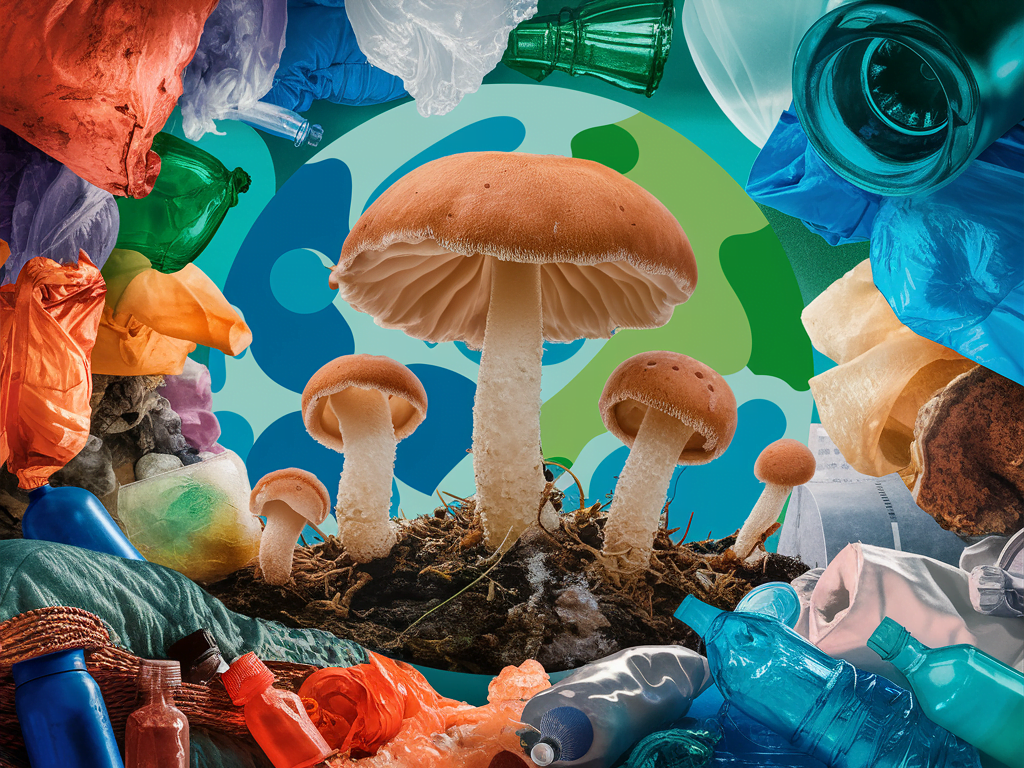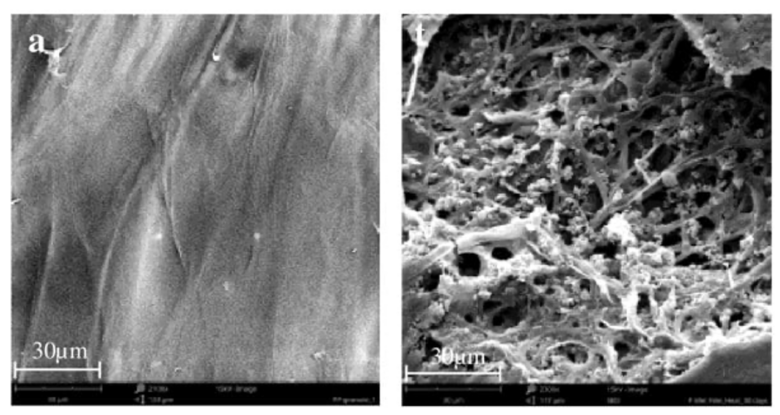One of the most urgent environmental issues of our day is plastic pollution. Millions of tons of plastic debris are dumped into rivers, oceans, and landfills each year, damaging innumerable ecosystems and lingering for centuries. Fungi have emerged as an unexpected group of heroes amid mounting concerns and innumerable human-led initiatives. These unassuming organisms, which are frequently linked to deterioration and decomposition, are demonstrating incredible promise in decomposing tough plastics and providing hope for a cleaner Earth. The intriguing question of how Fungi can help fight plastic waste is driving innovative research into mycoremediation as a sustainable solution. Let’s examine in more detail how fungi are subtly transforming the battle against plastic pollution.

Plastic pollution is a growing environmental crisis. Millions of tons of plastic waste end up in landfills and oceans each year, causing harm to wildlife and ecosystems. But there might be a surprising ally in the fight against plastic – fungi!
Fungi are an ancient and diverse kingdom of organisms, separate from plants, animals, and bacteria. Unlike plants, fungi do not produce their own food through photosynthesis. Instead, they break down organic material in their environment, absorbing nutrients. This incredible ability to decompose tough substances—like wood and leaf litter—has made them essential players in nutrient cycling and soil health for millions of years. However, recent scientific discoveries have revealed that some species of fungi can go even further: they can break down synthetic polymers—the core component of plastics, which were once thought to be virtually indestructible in nature.
Did you know that certain fungi can break down plastic, offering a glimmer of hope in our quest to tackle one of the greatest environmental challenges of our time? It’s a fascinating discovery highlighting these often-overlooked organisms’ incredible potential.
The Plastic Predicament
The world today faces a plastic predicament of alarming proportions, as synthetic polymers have become deeply woven into the fabric of modern life while simultaneously wreaking havoc on the environment. Since the 1950s, more than 9 billion tons of plastic have been produced globally, with the majority ending up in landfills, oceans, and ecosystems where it can take centuries to decompose. What began as a revolutionary material offering durability, flexibility, and convenience has now spiraled into a crisis of overwhelming waste and pollution. Single-use plastics—bags, bottles, packaging—account for a significant portion of the problem, often discarded after mere minutes of use but persisting in the environment for generations. Oceans are choking with microplastics, affecting marine life at every level of the food chain, while landfills overflow and release harmful toxins into the soil and air.
The production of plastic also carries a heavy carbon footprint, relying on fossil fuels and contributing significantly to greenhouse gas emissions. Despite growing awareness, global recycling rates remain dismally low, highlighting the urgent need for systemic change. The plastic predicament demands innovative solutions, a rethinking of consumption habits, stronger waste management systems, and the exploration of natural allies—like fungi—that might hold the key to breaking down this resilient material and restoring ecological balance. Plastic pollution has reached crisis levels, with vast amounts of plastic waste clogging our landfills, oceans, and ecosystems. Traditional methods of plastic disposal are ineffective and environmentally damaging, leaving us in desperate need of alternative solutions. That’s where fungi come in.
Fungi vs. Plastic: A Groundbreaking Discovery
Researchers have identified several species of fungi capable of degrading plastics such as polyurethane and polyethylene. In 2011, scientists at Yale University discovered a fungus called Pestalotiopsis microspora in the Amazon rainforest that could survive on polyurethane as its sole carbon source, even in oxygen-free environments. Similarly, Aspergillus tubingensis, found in a Pakistani landfill, has been shown to break down plastic in a matter of weeks, a task that typically takes hundreds of years naturally. These fungi release enzymes that break apart the complex chemical bonds in plastics, effectively digesting them into simpler compounds. This breakthrough holds profound implications for how we could manage plastic waste in the future.
In lab experiments, these fungi devoured polypropylene samples, breaking down between 25% and 27% of the plastic within 90 days. After 140 days, the plastic was completely broken down. While this might be a speed record for fungi, plastic-munching bacteria have also been discovered, capable of breaking down 90% of PET (polyethylene terephthalate) in just 16 hours.
But Aspergillus tubingensis is just the tip of the iceberg. Researchers have since identified other fungi with similar plastic-degrading capabilities, including Pestalotiopsis microspora and Rhodococcus rhodochrous. Fungi break down the complex molecular structure of plastics by producing enzymes that turn them into more manageable compounds, allowing other microorganisms to further degrade them.
How Fungi Could Revolutionize Waste Management
How do fungi achieve this feat? Fungi are believed to degrade plastics into simpler molecules for absorption or excretion, though the exact mechanism remains under investigation. These versatile organisms offer hope for sustainable waste management. The potential applications of fungi in waste management are enormous. Imagine bioreactors filled with plastic-eating fungi, processing plastic waste faster and more efficiently than traditional recycling methods. Or engineered fungi that could be deployed in landfills to accelerate the decomposition of existing waste mountains. Fungal solutions could complement other sustainable initiatives like biodegradable plastics and improved recycling systems. Additionally, since many fungi can operate in varied and extreme environments, they offer flexible options for different climates and regions around the world. These natural decomposers could also contribute to the circular economy by safely reintroducing the non-toxic byproducts they create from waste into ecosystems.
The implications of this discovery are profound. Imagine harnessing the power of fungi to biodegrade plastic waste in landfills, effectively reducing the burden on our environment and mitigating the harmful effects of plastic pollution. It’s a vision that offers hope for a cleaner, healthier planet.

Beyond Polypropylene
Fungi aren’t limited to polypropylene. Over 400 microorganisms can naturally degrade plastic, with fungi standing out for their versatility and powerful enzyme concoctions. Some studies even suggest that certain fungi can break down “forever chemicals” like PFAS, although the process is slow and not yet fully understood.
Beyond their role in plastic degradation, fungi contribute massively to environmental health. They form symbiotic relationships with plants (through mycorrhizal networks), help decompose dead material to release nutrients into the soil, and even assist in carbon sequestration. Some fungi can detoxify heavy metals and pollutants, further demonstrating their versatility as nature’s cleanup crew. By integrating fungi into our waste management and environmental restoration strategies, we can harness one of Earth’s oldest life forms to heal some of our most modern problems.
Current Challenges and the Road Ahead
While the promise of fungi is exciting, there are challenges to address. Scaling fungal plastic degradation to an industrial level requires careful control of conditions like temperature, moisture, and the specific types of plastics involved. There’s also a need to ensure that the byproducts of fungal degradation are harmless to the environment. Furthermore, studying fungi is complex because we poorly understand many fungal species, and cultivating them outside their native environments can be tricky. However, with advancements in biotechnology, genetic engineering, and mycology (the study of fungi), researchers are optimistic about developing more effective fungal strains and methods for large-scale application.
Conclusion
As we strive for a circular economy, disruptive recycling technologies driven by biological processes, such as fungi, hold immense promise. By harnessing nature’s solutions, we can combat plastic pollution and create a cleaner, greener future. Fungi might be one of our most effective, yet underappreciated, allies in the fight against plastic pollution. Their capacity to break down plastics provides a sustainable, organic remedy for a problem brought on by human convenience and excess. Even though there is still a long way to go before fungal technologies are widely used, the research to date suggests an exciting future in which nature itself will provide the answers we need. We must consider fungi as catalysts for a cleaner, greener world rather than merely decomposers, as we continue to innovate and explore.
So the next time you marvel at the beauty and diversity of the natural world, remember that nature may hold the key to solving some of our most pressing environmental challenges, including plastic pollution. And perhaps, in the humble fungi, we have found an unexpected ally in our quest for a cleaner, greener future.
Remember, it’s not just about speed; it’s about progress. Let’s celebrate these tiny plastic warriors—the fungi—that quietly work to heal our planet.
READ ALSO
- Salt Sugar and Microplastics: A Toxic Trio
- Top Plastic Polluting Companies in India
- Top Plastic Polluters in India
- The Poisonous Red Pond of Odisha
- Duckweed-Based Wastewater Treatment Systems
- Environmental Education: Cultivating Stewards of the Earth
- The Greening of Our Oceans: A Silent Signal of Global Change
- Wearable Plant Sensors: Revolutionizing Agriculture
- The Sacred Ganga: Lifeline of India
- World Ocean Day: Celebrating Our Blue Planet
- World Environment Day
- Sustainable living tips
- Urban Dwellers Green Warrior
- Forest Man of India-Jadav Payeng
- Top 10 Eco-Tourism Destinations in the World
- The Major Seas of the World
- Exploring the World’s Oceans: A Comprehensive Guide
- Understanding the Differences: Ocean Sea Bay and Gulf
Frequently Asked Questions (FAQs)
A: While the exact mechanism is still under study, fungi likely produce enzymes that break down plastic polymers into simpler molecules. These molecules can then be absorbed or excreted by the fungi.
A: Fungi can break down various plastics, including polypropylene (used in bottle caps and containers) and PET (polyethylene terephthalate). Their versatility makes them promising candidates for sustainable waste management.
A: Lab experiments have shown that certain fungi can break down polypropylene within 140 days. However, bacteria can be even faster, degrading PET in just 16 hours.
A: Yes! Some studies suggest that fungi may also break down “forever chemicals” like PFAS. Their potential extends beyond plastic pollution.
A: Fungi offer a biological solution to plastic waste, contributing to a cleaner, greener future. By harnessing nature’s abilities, we can address this global crisis.
A: Currently, the process is slower than traditional methods, and scientists are working on optimizing it for large-scale applications. Additionally, the ideal conditions for these fungi to thrive and break down plastic effectively need to be determined.
A: The potential is exciting! With further research, these fungi could become a powerful tool. We can look forward to potentially using them to break down plastic waste in landfills, recycling facilities, or even contaminated environments.







Your point of view caught my eye and was very interesting. Thanks. I have a question for you. https://www.binance.com/de-CH/register?ref=UM6SMJM3